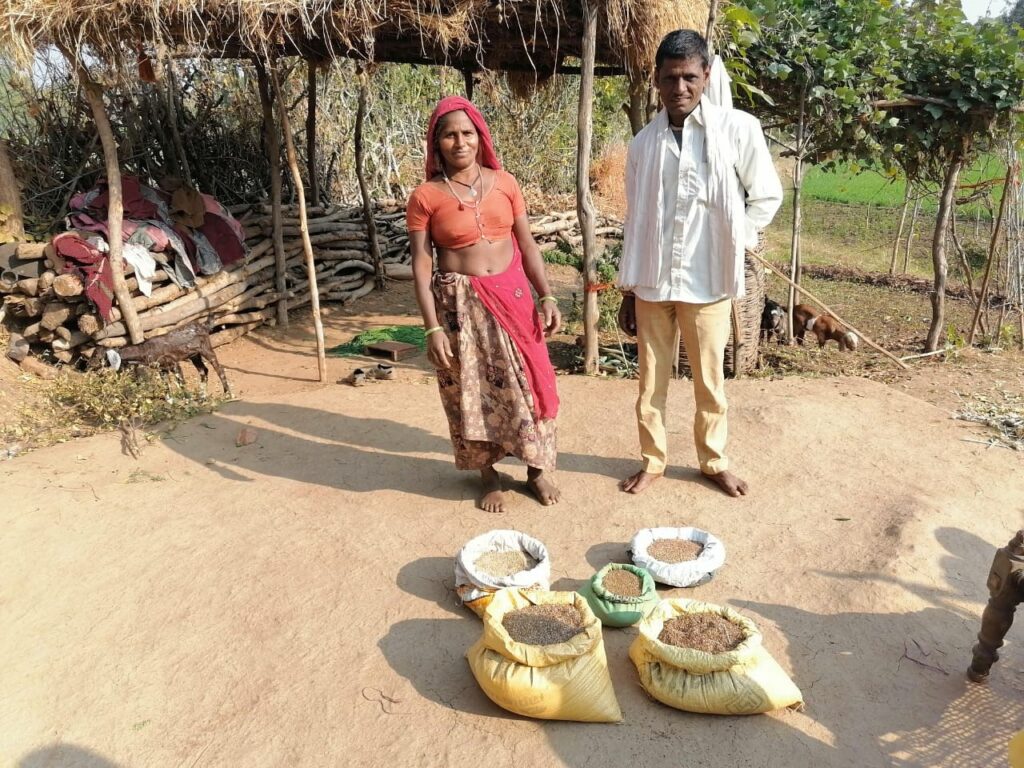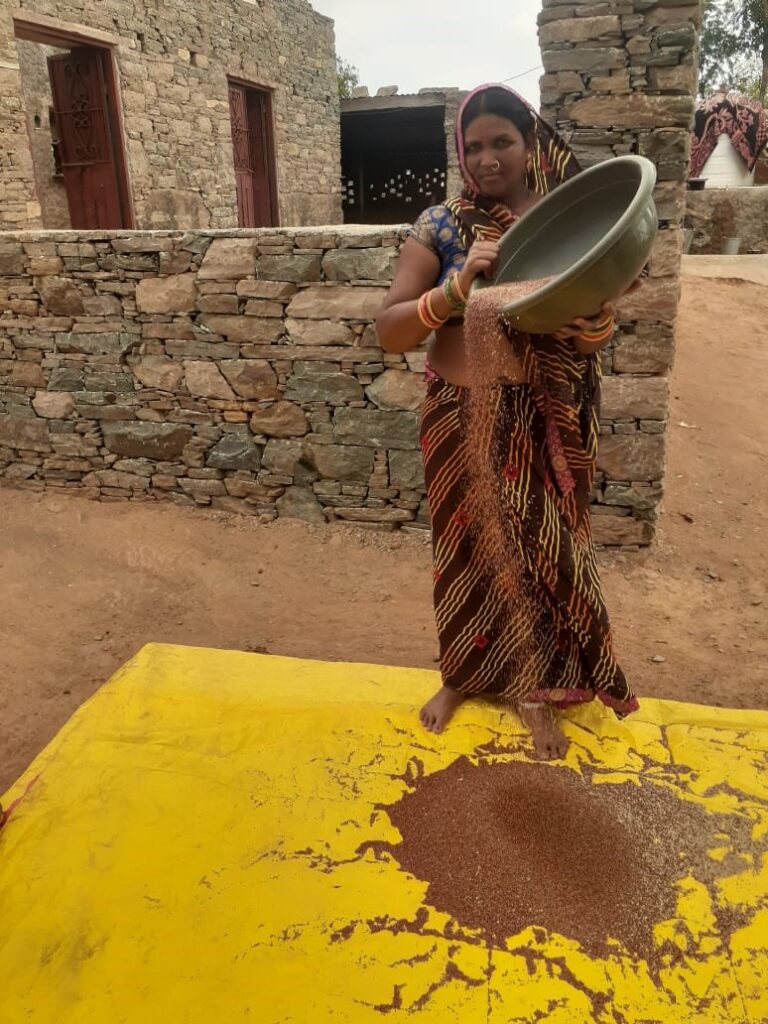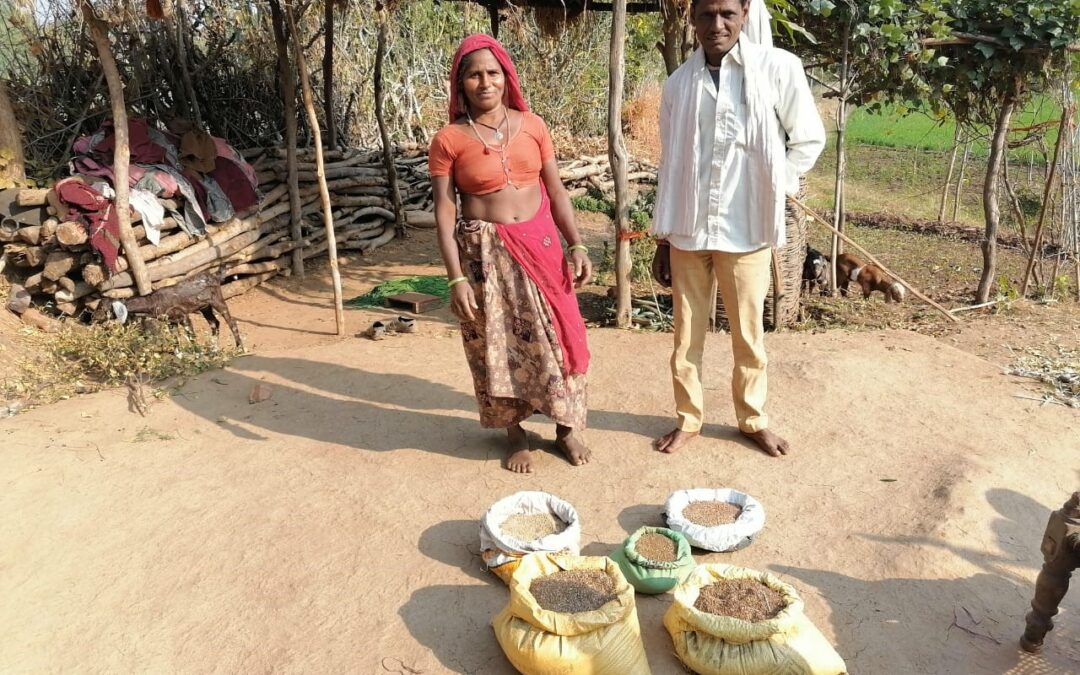The cultivation of millets is being actively encouraged by both central and state governments, with health benefits widely promoted by doctors and dietitians. All types of coarse grains have been collectively named “Shri Ann” by the central government. The cultivation of millets has been a part of India’s ancient agricultural practices, contributing to long, healthy lives in the past. Today, the negative effects of chemical fertilizers and pesticides outweigh the benefits of conventionally grown grains.

In this context, Kesar Devi is raising awareness about the benefits of millets among her village community. Kesar Rangalal Bamnia, a 42-year-old woman from Ghatiyan village in Ghati Panchayat of Banswara district in southern Rajasthan, owns 5 bighas of land. On this land, she cultivates maize, wheat, and gram. Additionally, she owns 2 buffaloes, 2 cows, and 3 goats. Her family includes two children, one of whom is a girl.
Kesar proudly shows her 5 bighas of land, which was once barren but now supports her children’s education. She explains that until two years ago, the sloped land was used for grazing cattle. Now, she is preparing to cultivate millets. Millets, a traditional crop in the state, had been forgotten for a long time. However, the Vagdhara organization is reviving it in tribal areas. Various varieties of millets are being cultivated, including ragi, kodo, kutki, kangni, and little millet, with ragi accounting for over 86% of the total cultivation. So far, 20,000 farmers have been provided with millet seeds, leading to both income and nutritional benefits.

Millet cultivation provides financial security for women farmers. The number of women adopting millet farming is steadily increasing. While most women farm maize and wheat alongside their male counterparts, in many places, millet cultivation is managed entirely by women. This independence helps them gain financial awareness and an independent income.
Kesar Bamnia, relying solely on the additional income from millet cultivation, is educating her 10-year-old son and herself. She says, “This became possible for two reasons: I had extra money to pay the fees, and since millet cultivation requires less time than other crops, I have plenty of free time to learn new things.”
On her 3 bighas of land, Kesar grows three different varieties of millets. Last season, she sold four quintals of produce at approximately Rs. 3,579 per quintal. In contrast, she receives a minimum support price of about Rs. 2,000 for maize. In 2023, she started millet cultivation with just 250 grams of seeds and now produces 5 quintals annually. Women like her sell their produce through the Mangadh Farmer Producer Company and in local markets, where they receive an even higher price of Rs. 50 per kilogram.
In Sundarav village of Anandpuri tehsil, 41-year-old Eladevi Ninama cultivates millets on her 3 bighas of land, producing five quintals per season. She says, “We not only sell it in the market but also consume it at home, considering its numerous health benefits.” Eladevi adds, “I manage the income from farming and feel financially independent.” The Vagdhara organization is playing a significant role in reviving millet cultivation on a large scale. Millets are known as low-cost, rain-fed crops suitable for arid regions. They are enhancing livelihood opportunities and economic independence for women farmers in the tribal districts of the state.

